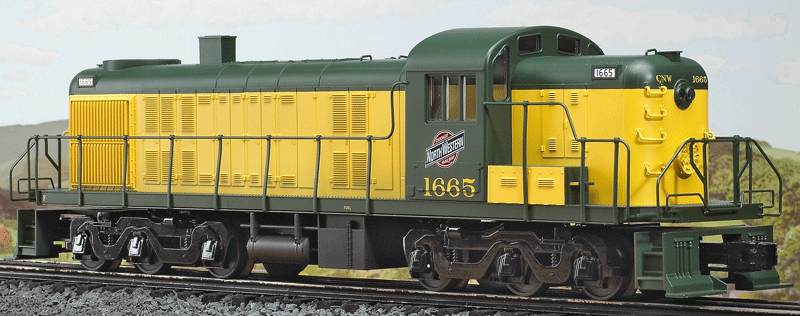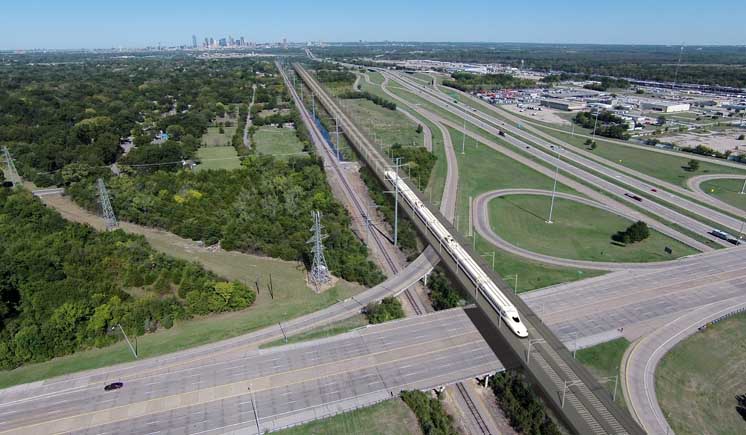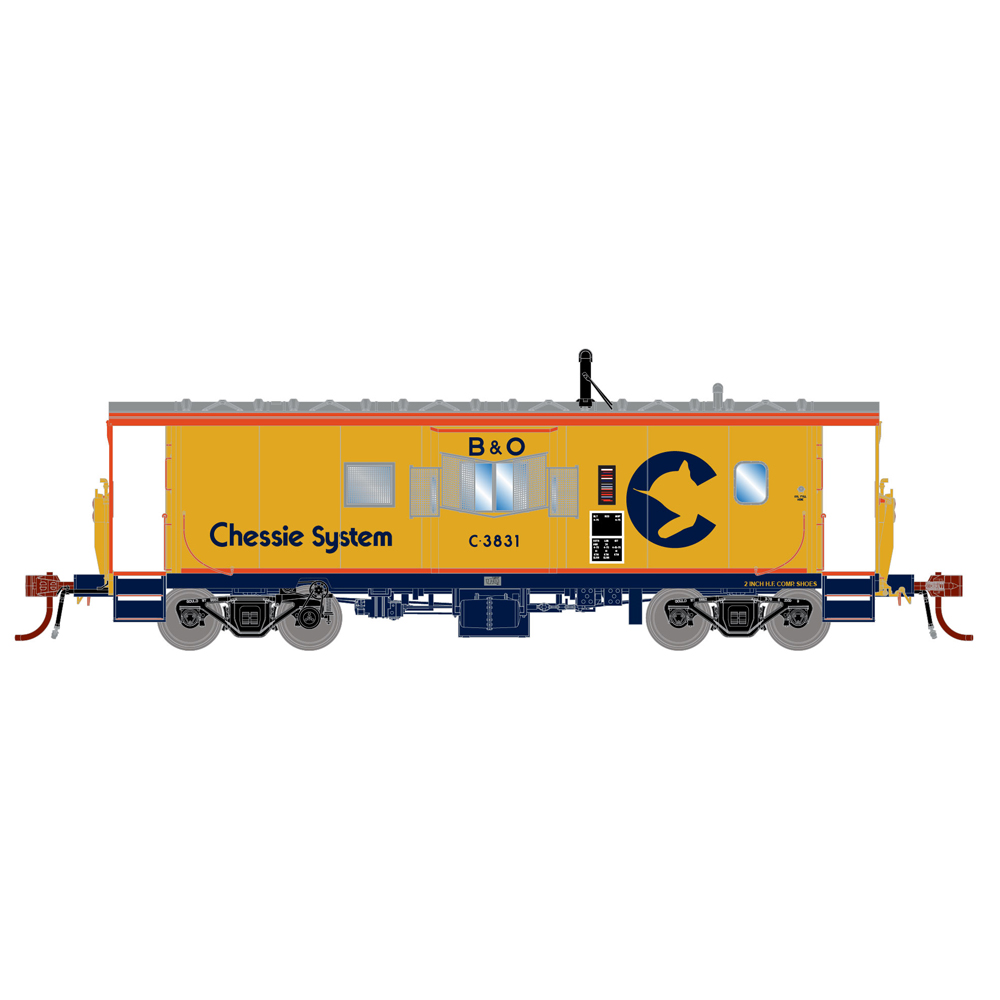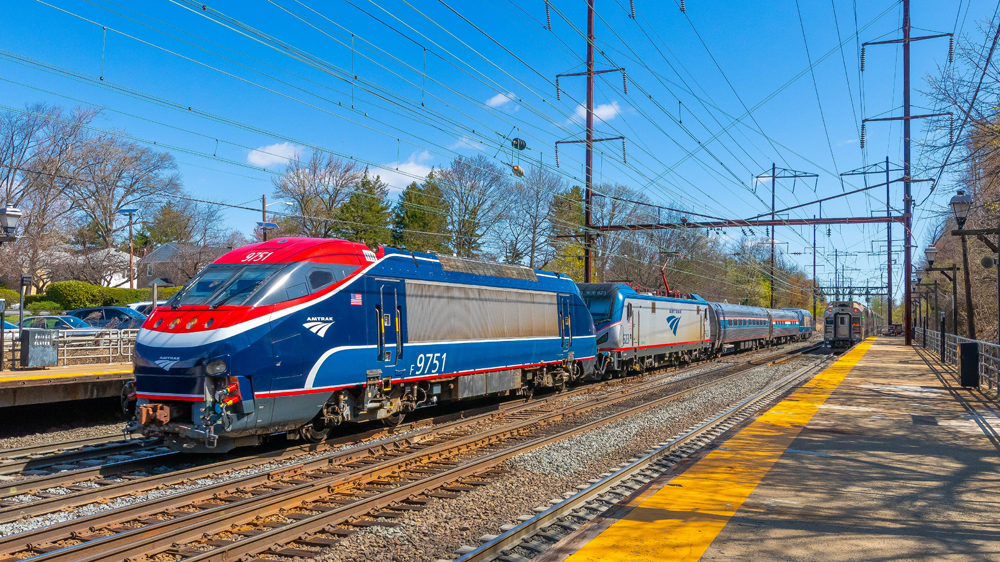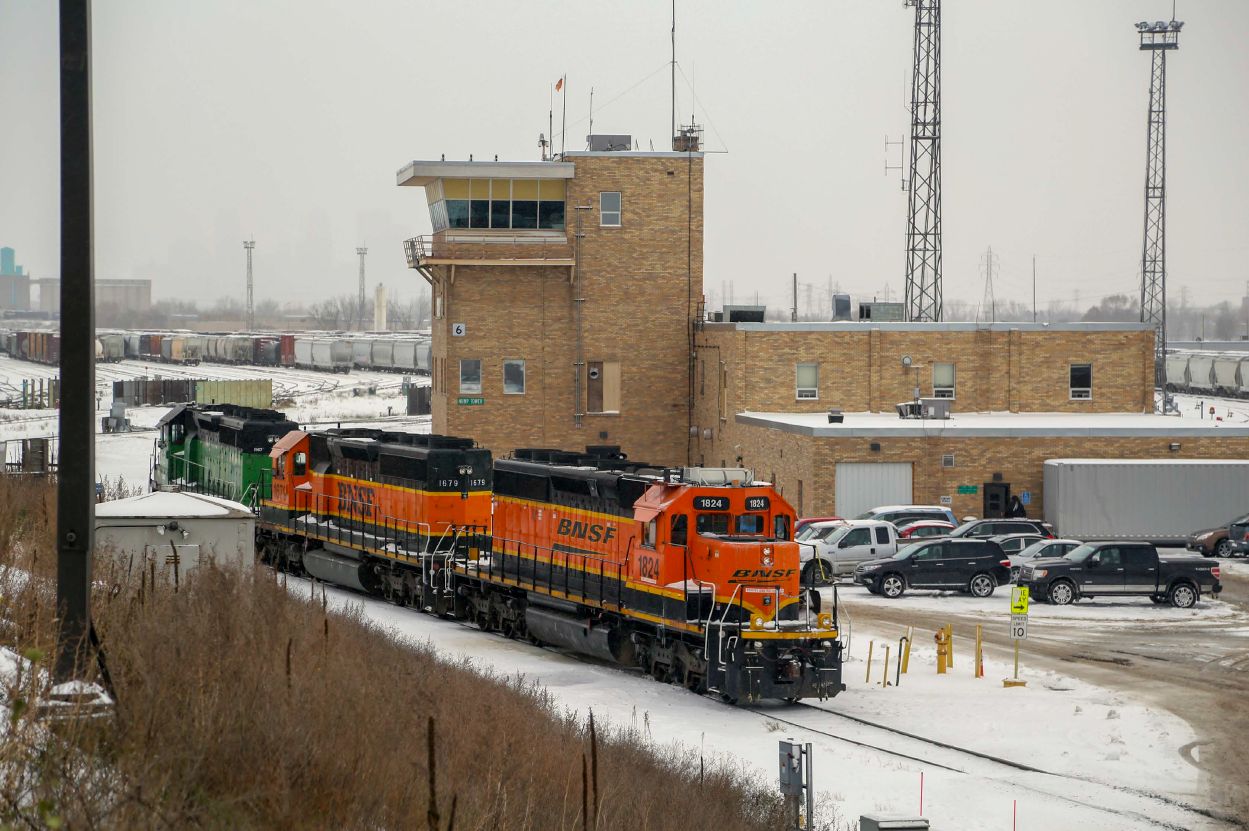Atlas O has stepped up to fill this need with its Trainman line. So far we’ve seen attractive Trainman scale-sized rolling stock and terrific cabooses. But what about motive power? Traditionally, locomotives are the focus of attention – and are always by far the most expensive pieces on a layout. Well, Atlas O is offering a scale-sized, nicely detailed RSD-4/5 for a suggested retail price of just $229 without Lionel’s TrainMaster Command Control and RailSounds.
Interested? I’ll bet you are.
But what the heck is an RSD-4/5?
In 1951, the real-world RSD-4/5 entered production as a six-axle cousin to the popular RS-3 diesel road switcher made by American Locomotive Co. (Alco), which sold more than 1,300 RS-3s to North American railroads.
Alco executives hoped that the advantages of weight distribution over six axles rather than four, along with a larger generator in the RSD-5 (also used on the famed Alco PA), would make its RSD-series a good seller. At the time, the only competitor offering a six-axle road switcher was Baldwin. (General Motors’ Electro-Motive Division didn’t offer one until 1952.) Sadly, as was typical in the post-steam era, Alco guessed wrong, and it sold just 36 RSD-4s and 204 RSD-5s.
Interestingly, in The Diesel Builders, Vol. II: Alco, author John Kirkland notes that an RSX-4 variation of the RSD-4 was constructed by Alco and EMD on a sub-contract from GE. Talk about all in the family! These locomotives, totaling 83 from Alco and 13 from EMD, were special units for the U.S. Army and built to operate on multiple track gauges.
The 36 RSD-4s were bought by the Central Railroad of New Jersey (and the firm’s short-lived tax-dodge, the Central Railroad of Pennsylvania), Chicago & North Western, Santa Fe, Kennecott Copper, and Utah Railway. The RSD-5s were ordered by the Birmingham Southern, Chesapeake & Ohio, Chicago & North Western, Cotton Belt, Ferrocarril del Pacifico, Milwaukee Road, Pennsylvania, National Railways of Mexico, Southern Pacific, Texas & New Orleans, and Utah Railway.
Just three RSD-4/5s still exist: Kennecott Copper 201 in Washington, Utah Railway 306 in Utah, and Chicago & North Western 329 in Ohio.
The model
As I opened the box, I kept thinking “budget,” which to me suggests middle-of-the-road, circa 1990 quality. To my pleasure, the model has a first-rate appearance.
Pulling the engine from the box, two design elements really popped out: the add-on grab irons and the big louvers at the end of the locomotive’s long hood.
It would have been easy and economical for Atlas O to have cast the grab irons as part of the plastic shell, but Atlas O chose not to. It also went the extra mile and used realistic hand grabs instead of bent wire. The grab irons mate with the body in a raised section that in the real world represents part of the metal grab itself – and it even has a cast-in rivet to simulate its attachment point. Neat.
As for the distinctive louvers, most Alco RS body shells I’ve seen depict them as closed, or, if they are open, they are only open at a slight angle.
The Trainman Alco’s louvers are open wide. While there isn’t any see-through effect, the open appearance clearly sets this model apart.
The Atlas O model has a sheet-metal frame measuring 55 feet in O scale, 13 ¾ inches long (in contrast, Atlas O’s premium models feature die-cast metal frames). A plastic fuel tank houses the horn speaker on our test sample. The trucks feature die-cast metal side frames. While a flat paint might have made them look a bit better, “glossy” works for the factory-fresh appearance.
Beyond open louvers and separately applied grab irons, the shell has a good level of cast-in detail, with plenty of crisply outlined hinges, hatches, seams, vents, and latches. The top of the shell has two more “bonus” detail items: two grab irons just behind the cab and an exhaust fan with gray blades beneath a see-through screen. Handrails aren’t your old, economically stamped-steel variety, but are constructed from wire railings held by realistic stanchions.
Like many O gauge models of Alco road switchers, the Atlas O cab is a separate piece from the shell, and the two sections are painted before assembly. In the case of our sample locomotive, you can see the yellow and green body paint through the cab windows, which may bother some hobbyists. Overall, paint and decoration are top-of-the-line. The colors were cleanly applied, with no oversprays or spots where the paint was applied too thin. The division between the green on the roof and yellow on the sides of the locomotive is razor sharp.
The locomotive is available in Chesapeake & Ohio, Cotton Belt, and Santa Fe road names, in addition to the Chicago & North Western.
On the test track
We specifically sought an RSD-4/5 without Lionel’s TrainMaster and RailSounds systems for our review to better experience the locomotive as it would be purchased by hobbyists targeted by the Trainman line. Please note that Trainman diesels with TMCC don’t offer speed control or smoke units as Atlas O’s premium diesels do.
Operationally, I expected this model to perform as well as other Atlas O locomotives we have tested, just without command-control electronics and a booming sound system. I wasn’t disappointed, and boy, is this locomotive quiet. Running our sample locomotive around the test track at its slowest speeds, the only sound I could hear was the swish of metal wheels on tinplate track.
The model is equipped with twin can-style motors supplied by two center-rail pickups roughly 9½ inches apart. On a variety of layouts and track brands it performed flicker and stumble free.
Drawbar pull was fantastic, thanks, no doubt, to each truck having four traction tires. Yup, that means there are eight traction tires on this rig. Drawbar pull was a mighty 3 pounds 10 ounces for the 4 pound 21/2 ounce locomotive.
Our recorded speed range using a conventional transformer was 16.6 scale mph to 110.7 scale mph. Oh, the high-speed measurement was taken at 13 volts (I didn’t have a straightaway long enough to let ‘er rip at 18 volts), so rest assured, this Alco packs plenty of speed.
The conventional-control Trainman locomotives come with horn and bell sounds, but no diesel sounds. The horn works like those on current Williams locomotives: Press the transformer button and you’ll hear a digital re-creation of the traditional long-long-short-long grade-crossing blast.
The first Trainman locomotive is a well-made, attractive, and value-priced model. It is a great first toe in the water for both established but budget-conscious hobbyists and folks thinking about getting into O gauge trains and desiring to start out with scale-sized gear from the get-go.
Price: $229.95 (conventional control), $369.95 (with TrainMaster Command Control and RailSounds)
Features: O-31 operation, two can-style motors, directional lighting, die-cast metal trucks and couplers, a version with Lionel TrainMaster and RailSounds is available
Pros: Scale size, great puller, smooth operation, low price
Cons: None
Made in the People’s Republic of China for the Atlas O Trainman line





